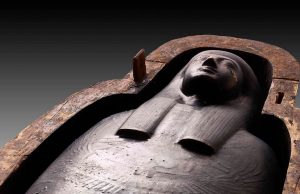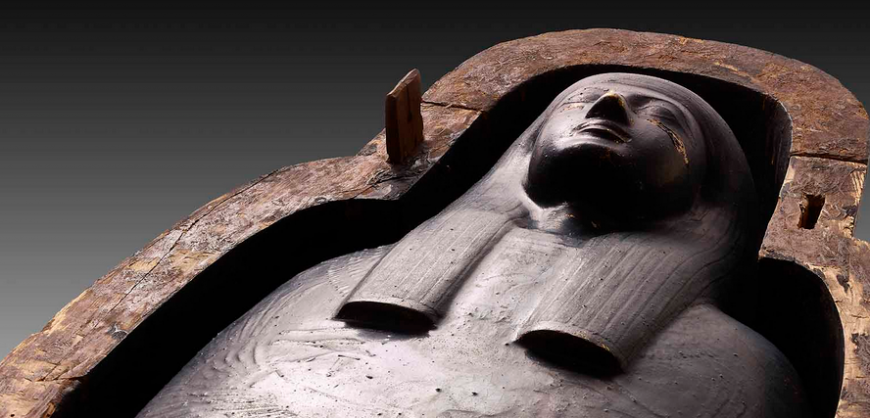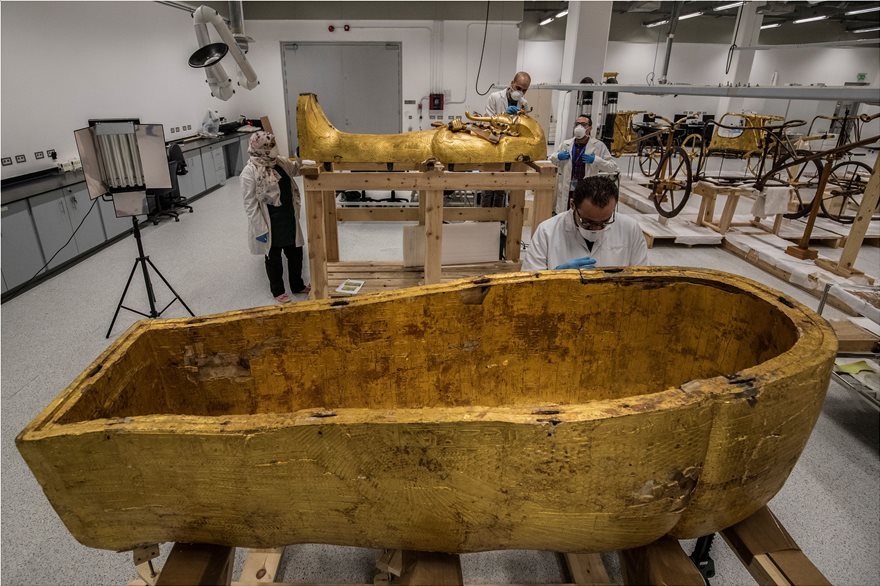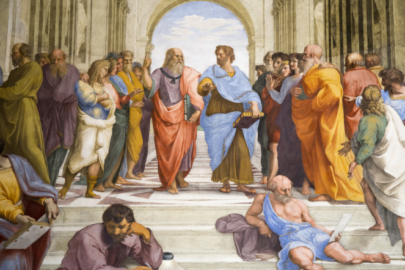A ‘black goo’ used by the ancient Egyptians to cover mummy cases was made from a mixture of animal fat, tree resin, beeswax and crude oil from the Dead Sea, scientists have revealed.
Several mummies were given this bizarre treatment from the 19th to 22nd Dynasty, between 1,300 and 750 BC.
One such by the name of Djedkhonsiu-ef-ankh, who was a priest to the sun-god Amun, was mummified, wrapped in fine linen and sewn into his case after he died almost 3,000 years ago.
Elaborate and brightly coloured painting was added to the material and shimmering gold leaf was placed over his face, before he was positioned inside a larger wooden coffin.

(Credit: Trustees of the British Museum)
Russian Su-27 & 30 fighters intercept US bombers over Black Sea
Jet-black gloop was then poured over him, obscuring the expensive paintwork and glint of gold forever.
Now analysis by the British Museum has revealed what the black substance is, and shed light on its purpose.
As many as 100 samples of the ‘black goo’ were taken and vaporized in a process called Gas Chromatography – Mass Spectrometry.
Read more: archaeology newsnet work


































